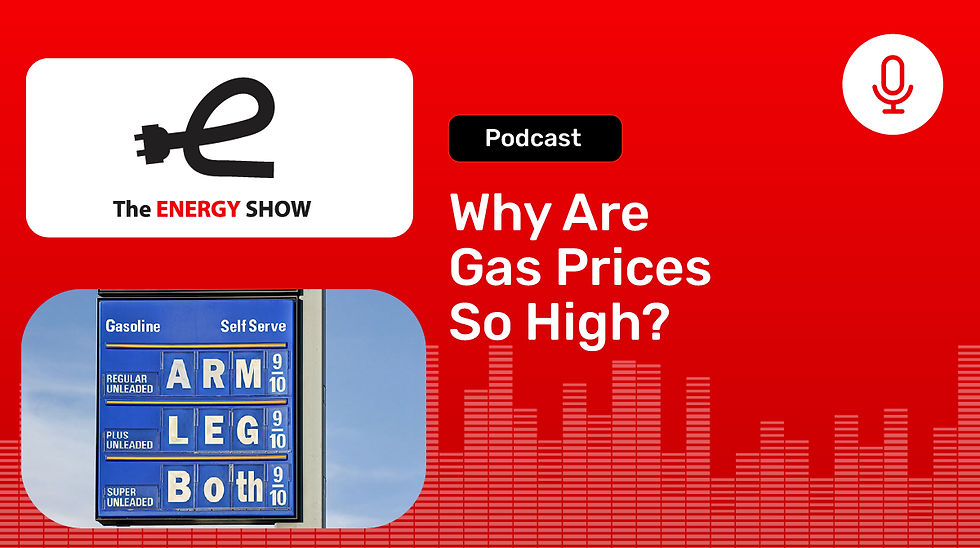Why Are Gas Prices So High?
- The Energy Show
- Nov 30, 2021
- 2 min read
Updated: Jan 23, 2023

My wife complained to me last week that it cost $80 to fill up her car (I was oblivious since I drive an EV). But I wasn’t surprised since the price of gas in San Jose is about $5/gallon.
Gas prices are definitely higher than they used to be, but the reality is that prices have been rock stable on an inflation-adjusted basis for over 30 years. In 1978, gas prices were $2.44/gallon compared to $2.24 in 2020. Over the same time period the average gas mileage of a car has gone up from 15 mpg in 1978 to 25 mpg in 2020. Adjusting for inflation and gas mileage, it cost $0.16/mile to drive in 1978 and $0.09/mile in 2020. Even at the U.S. average price of $3.42/gallon, it is still cheaper to drive a car in 2020 than it was in 1978.
Nevertheless, gas station signs advertising $5/gallon gas are jolting. And get this: in May, June and July of 2021 U.S. gas refineries exported record amounts of gasoline! Drilling for more oil in the U.S., releasing petroleum from the Strategic Petroleum Reserve, or building more refining capacity will not significantly reduce U.S. prices. The simple reason is that if prices are higher overseas, U.S. driller and refiners will simply maximize their profits by shipping their oil and gas to overseas customers.
Rather than groaning about high gas prices, there is one thing you can do to permanently avoid the impact of these future gas price shocks: get an EV and charge from solar. At average California solar electric rates of $0.10/kwh, driving costs are about $0.03 per mile. For more about high gas prices and how you can cope, please tune into to this week’s Energy Show.




Comments